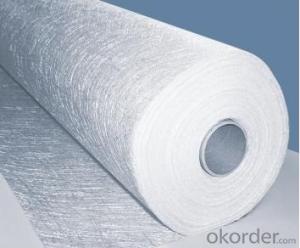Spoolable Composite Pipe: A Modern Solution for Efficient Fluid Transportation
When it comes to fluid transportation, the spoolable composite pipe is a game-changer. This innovative technology has revolutionized the way we think about pipelines, offering a blend of ease of installation and high performance that traditional pipes simply can’t match. Whether you’re in the oil and gas industry, water management, or any sector that requires fluid transportation, this article is for you. Let’s dive into the world of spoolable composite pipes and explore their benefits, installation process, and why they’re the talk of the town.
The Benefits of Spoolable Composite Pipes
Lightweight and Strong
One of the most significant advantages of spoolable composite pipes is their lightweight nature. Compared to steel pipes, these pipes are much easier to handle and transport, which is a huge plus for any project that requires mobility and flexibility. Despite their light weight, they are incredibly strong and can withstand high pressures and temperatures, making them ideal for various applications.
Corrosion Resistance
Corrosion is a common problem with traditional metal pipes, but not with spoolable composite pipes. They are made from materials that are naturally resistant to corrosion, ensuring a longer service life and reducing the need for maintenance and replacement. This resistance also means that they can be used in harsh environments without the risk of degradation.
Flexibility and Adaptability
The flexibility of spoolable composite pipes is another feature that sets them apart. They can bend and adapt to the terrain without the need for additional support structures, which simplifies the installation process and reduces costs. This adaptability also allows for easier navigation around obstacles and through challenging landscapes.
Reduced Environmental Impact
In today’s world, environmental concerns are at the forefront of every industry. Spoolable composite pipes contribute to a greener approach by reducing the carbon footprint associated with transportation and installation. Their lightweight nature means fewer emissions from transportation, and their durability reduces the need for frequent replacements, which in turn lowers waste.
The Installation Process: A Step-by-Step Guide
Pre-Installation Planning
Before you even touch a spoolable composite pipe, you need to plan. This involves assessing the route, understanding the terrain, and determining the best approach for installation. Proper planning ensures that the process is smooth and efficient, minimizing disruptions and delays.
Unrolling the Pipe
The unrolling process is where the ‘spoolable’ aspect of the pipe comes into play. It’s like pulling out a giant garden hose, but much more high-tech. The pipe is unrolled from a spool, and as it’s laid out, it’s connected to the existing pipeline or other sections of the pipe.
Joining the Sections
Once the pipe is unrolled, the next step is joining the sections together. This is typically done with specialized connectors or couplings that ensure a secure and leak-proof connection. The process is relatively simple and requires minimal tools, making it a breeze compared to traditional pipe joining methods.
Testing and Commissioning
After the pipe is installed, it’s time for testing. This involves checking for leaks, ensuring the pipe’s integrity, and confirming that it meets all the necessary standards. Once testing is complete and the pipe passes with flying colors, it’s ready for commissioning and use.
Why Spoolable Composite Pipes are the Talk of the Town
Efficiency and Speed of Installation
The speed at which spoolable composite pipes can be installed is unmatched. Projects that would have taken weeks or even months with traditional pipes can now be completed in a fraction of the time. This not only saves on labor costs but also gets projects up and running faster, which is a win for everyone involved.
Cost-Effectiveness
The initial investment in spoolable composite pipes may be higher than traditional pipes, but the long-term savings are significant. Reduced maintenance, lower transportation costs, and faster installation times all contribute to a lower total cost of ownership.
Versatility in Applications
Spoolable composite pipes are not just for one type of fluid or one industry. Their versatility means they can be used in a wide range of applications, from transporting oil and gas to delivering clean water to remote communities. This adaptability is a major selling point for industries looking to innovate and streamline their operations.
Wrapping Up
Spoolable composite pipes are truly the future of fluid transportation. They offer a winning combination of ease of installation, high performance, and environmental friendliness. As industries continue to evolve and the need for efficient and sustainable solutions grows, spoolable composite pipes are poised to take center stage. If you’re in the market for a new pipeline solution, it’s time to consider making the switch to spoolable composite pipes. They might just be the best decision you’ll make for your project’s success.

